Search Results for Tag: Emissions
Ex-IPCC chief: 5°C warming?
The former chair of the Intergovernmental Panel on Climate Change says global average temperatures could reach five degrees centigrade above their pre-industrial level. British scientist Sir Robert Watson, who chaired the panel from 1997 until 2002, said the world had missed its chance to keep emissions below the level needed to keep to the 2°C maximum target set by the international community.
Speaking at a symposium on “Preventing global con-communicable diseases through low-carbon development” at the London School of Hygiene and Tropical Medicine, (LSHTM), Professor Watson said the chances of keeping temperature rise below three degrees are fifty-fifty, and the rise could be as high as five degrees. That would mean the Earth warming more than it has since the end of the last Ice Age. The consequences for the planet would be dramatic.
In a report for the “Climate News Network”, environment reporter Alex Kirby quotes Watson as saying: “All the promises in the world, which we’re not likely to realise anyway, will not give us a world with only a 2°C rise. All the evidence, in my opinion, suggests we’re on our way to a 3°C to 5°C world.”
The British expert is science director of the Tyndall Centre for Climate Change Research at the University of East Anglia, UK, and chief scientific adviser to the UK Government’s Department of Environment, Food and Rural Affairs. He says there are solutions available to tackle climate change, but a lack of political will and moral leadership to implement them. Emissions are continuing to rise at a rate which makes it highly unlikely the two degree target can be adhered to.
“When I was chairing the IPCC we were all very optimistic that we’d have a global agreement to limit emissions, though we knew it would be difficult. But we were hopeful that emissions would not go up at the tremendous rate they are rising now,” says Watson.
More on this story at Climate News Network
A climate-friendly future? Impressions of Masdar City
Today I paid a visit to Masdar City 17km from the centre of Abu Dhabi, set up in 2006 with the aim of being “one of the most sustainable cities in the world”, according to Masdar. Masdar was set up as a commercially driven renewable energy company and a strategic government initiative. The city is powered entirely by renewable energy and the buildings are designed to maximize energy efficiency.
This is an impression of the iconic architecture of Masdar around a pleasantly cool courtyard. (The modest gentleman on the couch is Sultan Aal Ali, in charge of Masdar’s development).
In the years since the vision of a sustainable, purpose-built city at the heart of a desert state was first launched, a lot of the enthusiasm seemed to have gone out of the project, at least in the view of a lot of media. That is one reason why I was keen to have a look at what is happening there today. I will be writing an article for our website on this in the next couple of weeks, so for today I’d just like to share some pictures, thoughts and impressions with you.
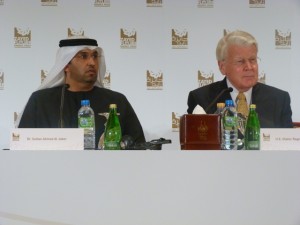
Dr. Sultan Ahmed Al Jaber, Director General of the Zayed Future Energy Prize with President Grimsson
Incidentally, as part of the World Future Energy Summit and at the ceremony announcing the 2013 Zayed Future Energy Prize here last night, the ICE connection was brought up again by the President of Iceland, Olafur Ragran Grimsson.
He was chairman of the prize jury and was talking about those connections between the record melt of the Arctic ice and the push for renewables here in the oil-rich Gulf region. Yes! The message seems to have arrived on the global stage.
Anyway, to Masdar City:
Using the sun to cool Masdar. Normally, air-conditioning would be one of the highest electricity-guzzlers and emissions producers. The architecture uses window-to-wall ratio, insulating building materials, shading and other means to keep buildings cool – and uses sun power to do the rest.
A modern version of a cooling wind-tower, to bring cold air to the courtyard. These towers have a long tradition in the region. They look great as well.
Hi-tech lab for nano-technology research at the Masdar Institute. The city is developing around the university complex.
This is the centre-piece of the brand-new 2nd phase of the Masdar Institute. The city is a work in progress. Today I was one of the first journalists to be allowed into the new development without safety helmet and boots for construction site safety.
Beautiful places, beautiful people! One of my guides from Masdar’s communications department against the background of a wall constructed from desert sand. Thanks!!!
Driverless public transport, using magnetic technology. Felt a little like sci-fi, but definitely got us across the complex. Not sure if it will catch on, but it was quite an experience.
I could go on all night, but will save the rest for a later date. There is plenty of building work going on. The German company Siemens will soon be moving in to its new headquarters in Masdar. Other companies are also planning to move in. The International Renewable Energy Association IRENA will ultimately have its headquarters here.
So far, students are the only residents. Seems a bit extravagant, which is one of the criticisms levelled at the eco-city in the past. But from what I saw today, things seem to be finally moving forward. EU Commissioner Connie Hedegard, who also visited Masdar today, told me Masdar was “leading by example”. She’s very positive about what’s happening in the region in terms of the growing interest in renewables. There’s a long way to go, she says – but stresses that applies to all of us.
Still seats available at this Masdar café today.
Green energy revolution in the Gulf?

Sustainable architecture – “Wendy”, a structure with a coating that cleans up the air when the sun shines, showcased in Abu Dhabi this week
“Everybody who’s anybody“in the world of renewables, climate and sustainability seems to be putting in an appearance here in the oil-rich emirate Abu Dhabi this week. Sustainability Week, as it’s dubbed, started off with a meeting of the International Renewable Energy Agency IRENA, which has its headquarters here. The announcement that China is applying for full membership this year was one of the highlights of the top-level meeting.
Today, at the start of the World Future Energy Summit, I’ve heard top-level speakers including French premier Francois Hollande, German environment minister Peter Altmaier, EU Climate Commissioner Connie Hedegard and others addressing the international audience (3,000 delegates, 30,00 visitors expected by the organizers in the course of the week). Germany in particular comes off very well, with people talking about the “Energiewende”, or energy transformation in progress there and the rapid development of renewable energy.
But the really fascinating thing for me is the feeling that the Gulf states seem to be getting serious at last about getting into renewables. There’s a lot of international interest in their motives. Abu Dhabi’s wealth, for instance, is clearly based on oil revenue. There is no sign that that is about to change in the near future. Use renewables at home to sell more oil abroad? Well, there is that.
But there is a clear interest in diversification of the energy supply and, of course, the economy. This region doesn’t want to miss out on the global move towards securing energy, water and food security by getting into renewables, (especially solar, for obvious reasons).  When it comes to emissions reductions, of course, there is still plenty of scope for debate, which is taking place here at the conferences on a regular basis, at all levels, from the stages to the coffee tables.
When it comes to emissions reductions, of course, there is still plenty of scope for debate, which is taking place here at the conferences on a regular basis, at all levels, from the stages to the coffee tables.
Sustainability is the buzzword this week – but is it just a buzzword?
Yesterday I visited Shams1, the world’s biggest single-unit CSP (concentrated solar power) plant, with a capacity of 100 MW, set to open very soon (although no-one was willing to confirm the actual date). It’s a huge project, with lines of mirrors as far as the eye can see. It could power 20,000 homes when it’s ready. Tomorrow, I’ll be having a look at Masdar city.
Qatar is also increasing its solar activities, as we’ve reported on DW recently. “Leading by example”, is how Hedegard described the Masdar initiative in her keynote.
But one of the most interesting issues today was a talk by Saudi Arabia’s deputy industry Minister Khalid al Sueiman about their targets for renewables. 30% of electricity generation by 2032 certainly sounds like a move in the right direction. So is the country once known as a key blocker of climate agreements and emissions reduction commitments turning over a new leaf? The motivation, the minister says, is to make the oil go further. The international media were pushing hard for more information from the Saudi expert. “We need encouragement, don’t push us too hard”, was an unofficial comment I heard from one of his aides.
I talked to Professor Jeffrey Sachs, renowned expert from the Earth Institute, Columbia University in the USA about this. He was giving a keynote speech here and launching the UN Sustainable Development Solutions Network (too hard to define right now).
He says he really does have the feeling positive things are happening here in the Gulf region.
The mega energy-event is sponsored by Exxon Mobile, incidentally. Oil companies preparing to shift to renewables? “I’ll believe it when I see it”, says Professor Sachs. But more on all that later. Things are certainly moving.
Climate-friendly clean energy from Abu Dhabi?
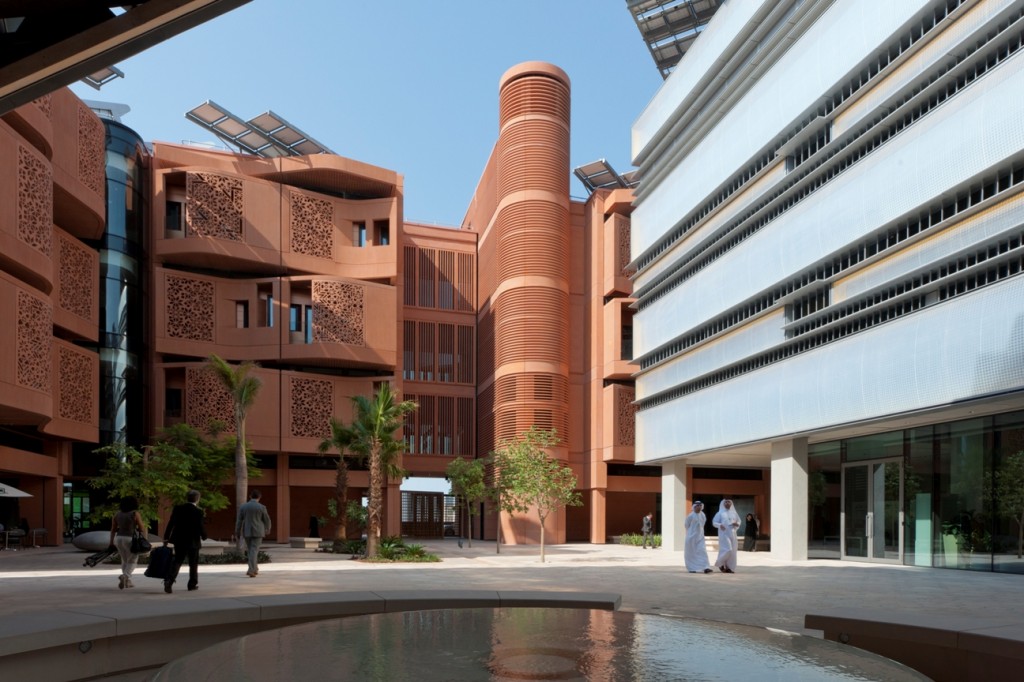
Masdar City, designed as a CO2-neutral sustainable model city for the future. It has its fans and its critics – I will have a look for myself this week.
Ever since it was decided to hold the 2012 UN climate conference in Qatar, I’ve been interested in the position of renewable energies in the oil- and gas-rich Gulf region. These countries would have the wealth to invest in innovative technologies and plenty of sun to harvest – but is there the motivation, given that their prosperity is based on the fossil fuels business? Recently, things seem to be moving with regard to solar energy in the area.Tonight I arrived in Abu Dhabi, the home of Masdar city. The World Future Energy Summit will be held here this coming week, as part of Abu Dhabi Sustainability Week. Given the huge ecological footprint and per-capita emissions record of the region, thinking about sustainability can only be a good idea. I’ll be visiting Masdar in the course of the week and attending some of the events – including an international water summit, as well as the energy meetings. It will be good to get an impression first-hand of what is happening in this key region with regard to halting climate change – and what would still need to be done.
How can the Antarctic be melting when part of the ice sheet is growing?
One of my colleagues keeps telling me global warming is not really causing ice melt, because the East Antarctic ice sheet is actually growing. Yes, it is indeed, according to the latest comprehensive study taking account of all the available satellite data. But this is in fact consistent with what scientists expect from climate warming. Warming oceans are leading to more precipitation, which falls on the high East Antarctic ice sheet as snow. The situation in West Antarctica and on the Antarctic peninsula are very different. If you find all this interesting, you might like to listen to this Interview with Andrew Shepherd, coordinator of the latest study, supported by NASA and ESA, the European space agency. He explains what the satellites tell us about the state of the polar ice caps and their increasing contribution to global sea level rise.
In case you missed them, you can still catch up on the satellite study and the latest models on sea level rise. At the end of the interview I asked Prof. Shepherd what difference the data could mean to the next IPCC models on sea level rise. He made the point that the real uncertainty in these models is about what emissions trajectory the world’s countries will opt for. Which brings us back to Doha. I’m following the talks with interest, but not much in the way of expectations. The German environment minister told my colleague Andrea Rönsberg in an interview he wasn’t too optimistic about whether the talks would manage to reduce sea level by even a tiny degree. He’s not alone there.







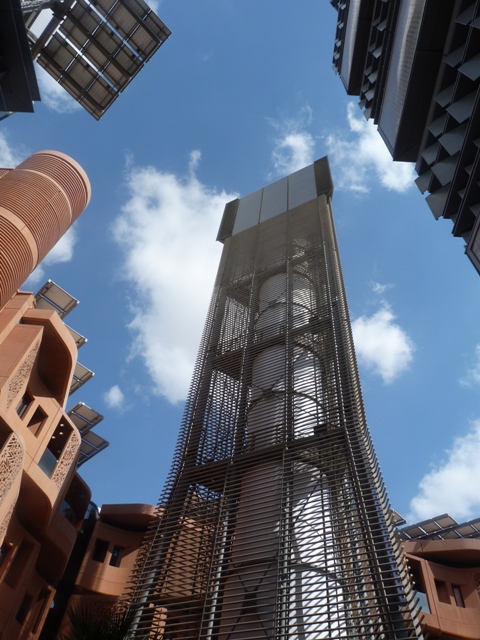

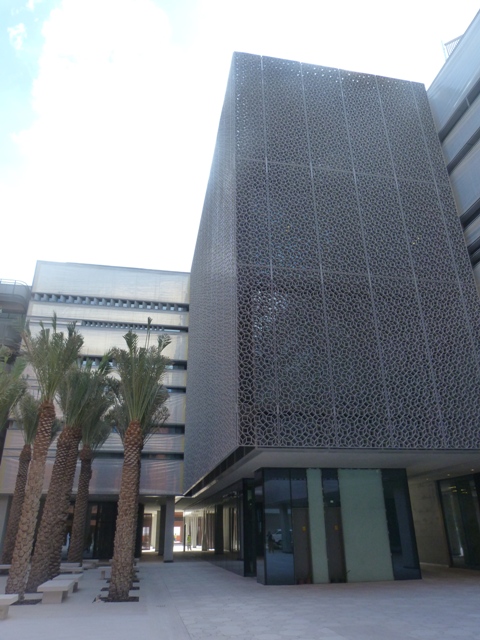
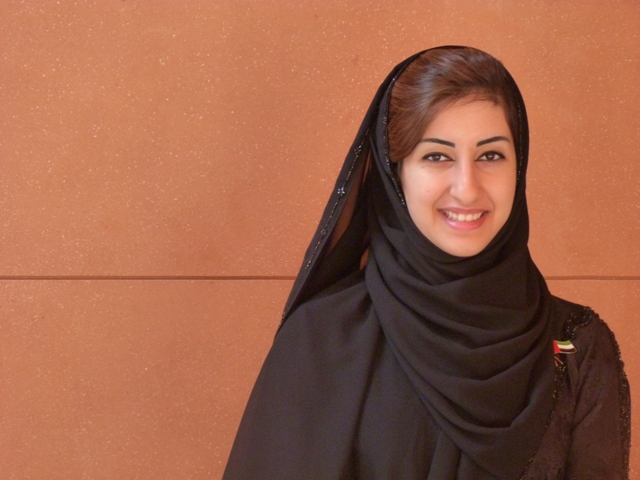
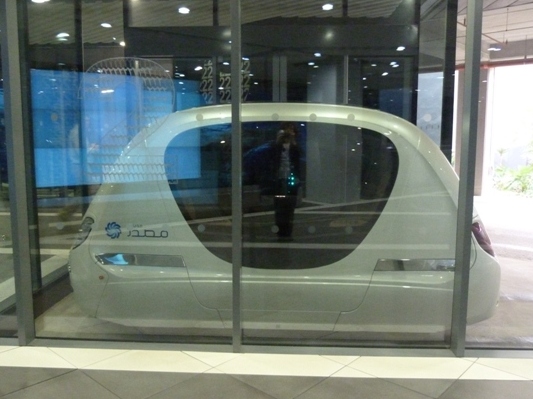
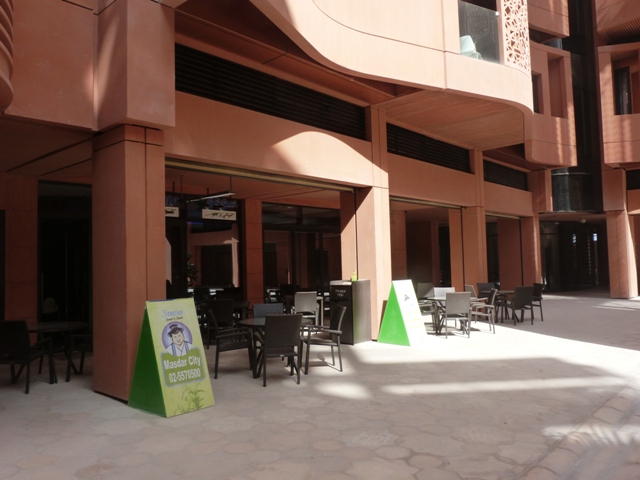


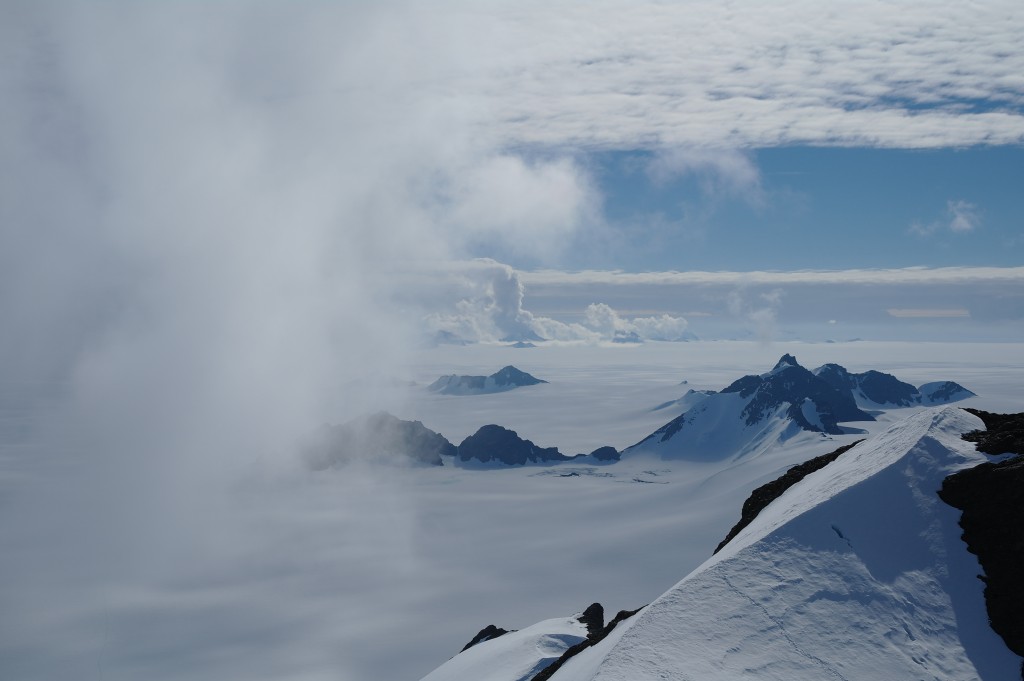
















Feedback